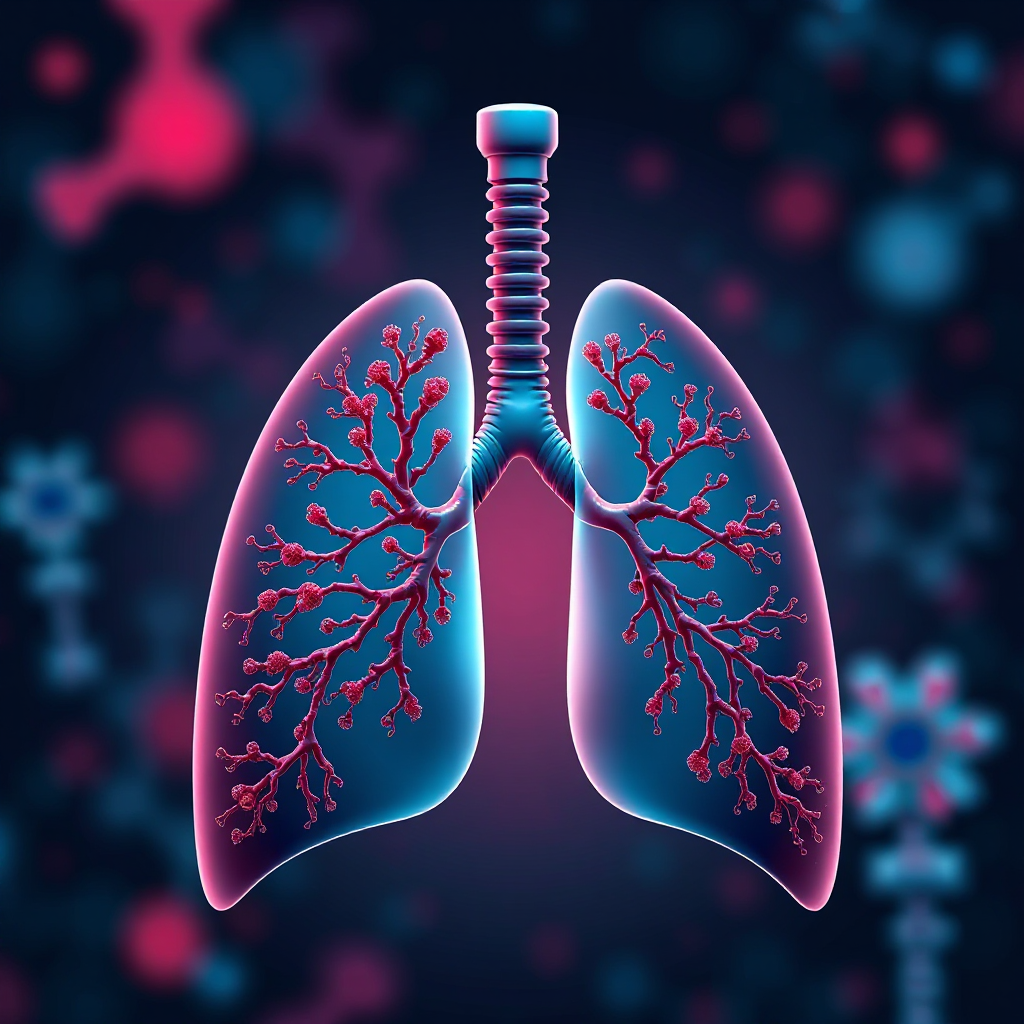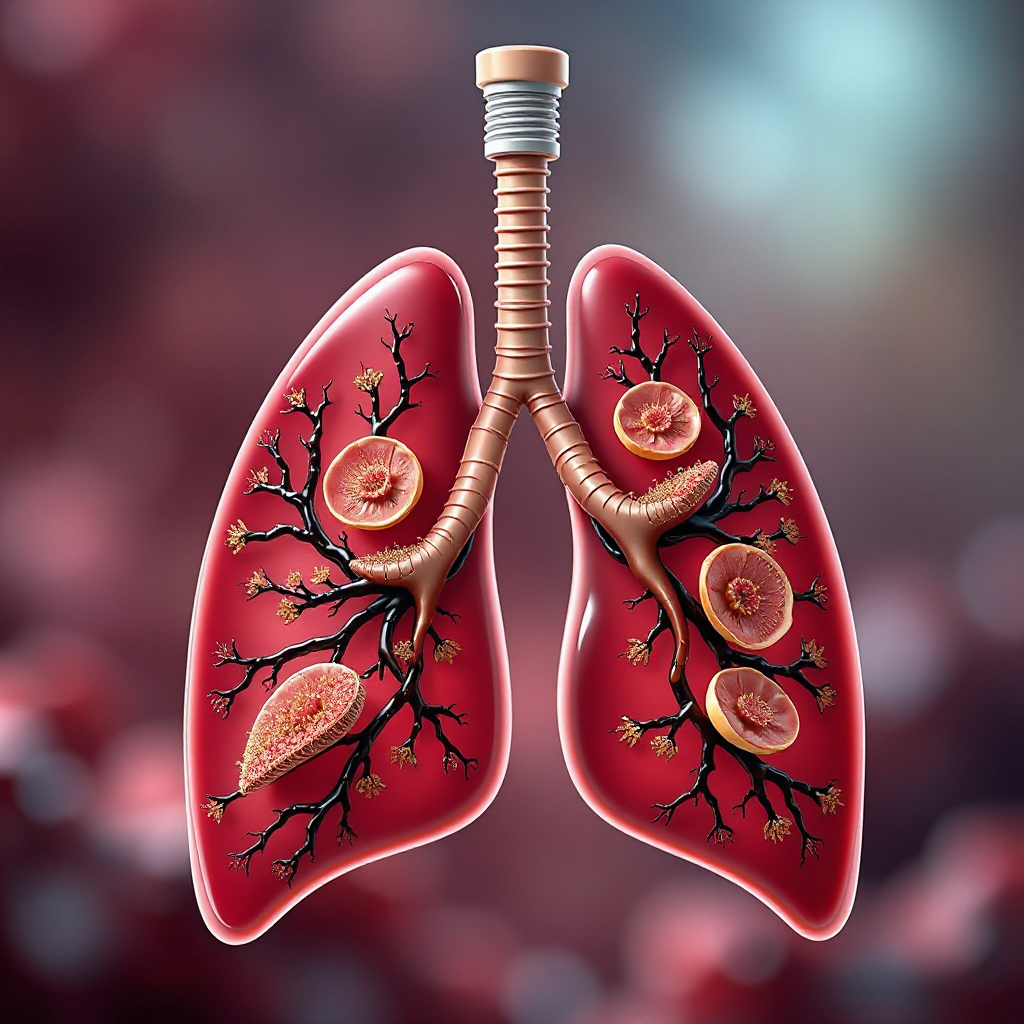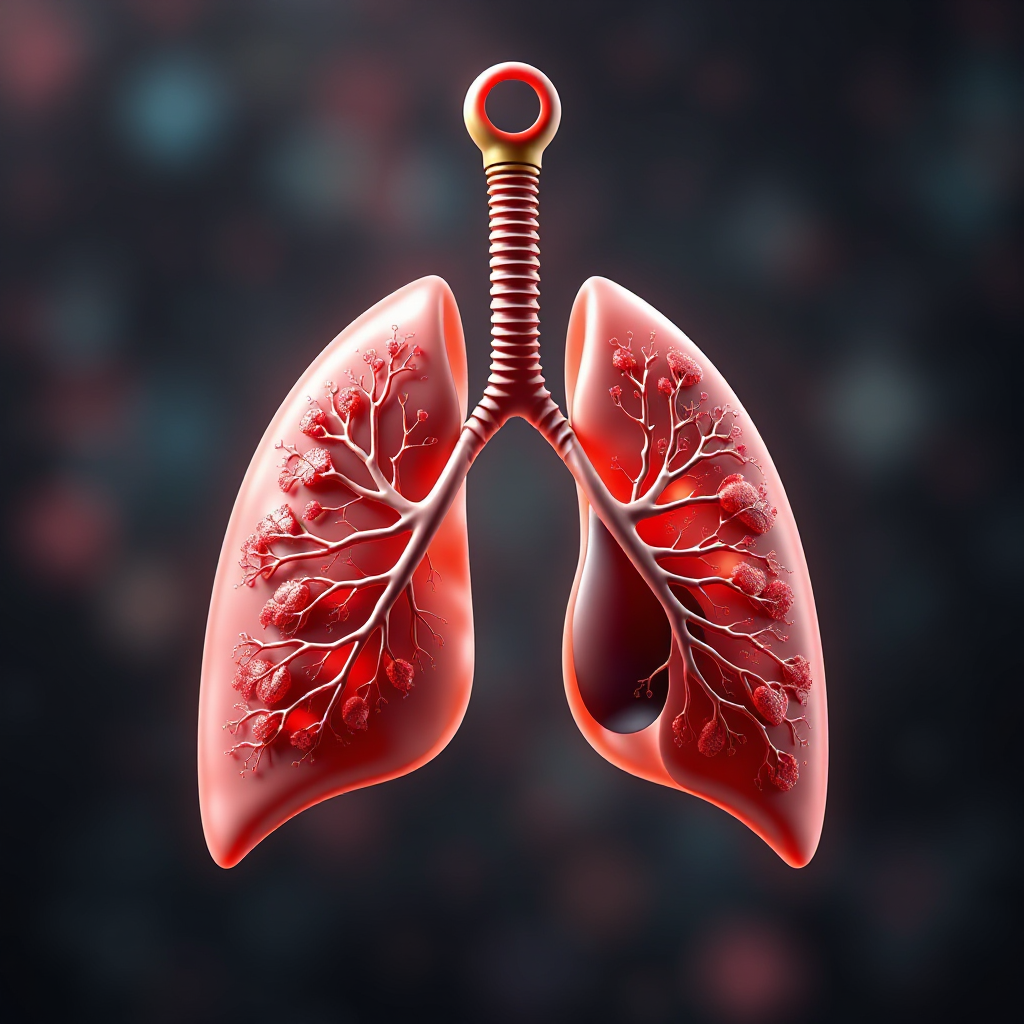Small Cell Lung Cancer-What Are the Symptoms and Causes

Small cell lung cancer grows rapidly and spreads aggressively. It accounts for about 12-15% of all lung cancer cases, making it less common than other types. Early detection is critical because survival rates drop significantly as the disease progresses. For instance, the five-year survival rate is around 29% in early stages but falls to just 3% once it spreads. This type of cancer is often linked to smoking, though other factors can also play a role. Recognizing symptoms early can improve outcomes and save lives.
Key Takeaways
Look for early signs like a long-lasting cough or trouble breathing. Finding it early helps with better treatment.
Smoking is the main cause of small cell lung cancer. Stopping smoking lowers your risk a lot.
Regular check-ups are important for people at risk. Finding it early can greatly improve survival chances.
Watch out for dangers like asbestos and radon gas. Being careful can reduce your chance of getting lung cancer.
See a doctor if you notice worrying symptoms. Quick medical help can save lives.
Symptoms of Small Cell Lung Cancer

Early-Stage Symptoms
Persistent cough
A persistent cough is one of the earliest signs of small cell lung cancer. You may notice that your cough worsens over time or doesn’t go away, even with treatment. In some cases, you might cough up blood or mucus, which can be alarming. These respiratory symptoms often signal that something is wrong and should prompt you to seek medical advice.
Shortness of breath
Shortness of breath can occur as the tumor grows and blocks airways or causes fluid buildup in the lungs. You might feel winded after minimal activity or even while resting. This symptom is common in small cell lung cancer and often worsens as the disease progresses.
Chest pain or discomfort
Chest pain or discomfort may develop due to the tumor pressing on nearby structures. You could feel a dull ache or sharp pain, especially when coughing or breathing deeply. This symptom is often mistaken for other conditions, so it’s important to pay attention to its persistence.
Fatigue and unexplained weight loss
Fatigue and weight loss are common early signs of small cell lung cancer. You might feel unusually tired, even after resting, or notice a significant drop in your weight without trying. These symptoms often result from the body’s response to the cancer.
Note: Early-stage symptoms of small cell lung cancer are often subtle and can overlap with other conditions. Unlike non-small cell lung cancer, small cell lung cancer may not show symptoms until later stages, making early detection challenging.
Advanced-Stage Symptoms
Difficulty swallowing
Difficulty swallowing, also known as dysphagia, can occur when the tumor grows near the esophagus. You might feel like food is getting stuck or experience pain while eating.
Hoarseness or voice changes
Hoarseness or changes in your voice may happen if the tumor affects the nerves controlling your vocal cords. This symptom can make your voice sound raspy or weak.
Swelling in the face or neck
Swelling in the face or neck often results from the tumor pressing on veins, restricting blood flow. This symptom, known as superior vena cava syndrome, is a common sign of advanced small cell lung cancer.
Severe fatigue and weakness
Severe fatigue and weakness become more pronounced in advanced stages. You may find it difficult to perform daily activities or feel drained even after minimal effort.
Did you know? Around 70% of small cell lung cancer patients are diagnosed with extensive disease, meaning the cancer has already spread to other parts of the body.
Symptoms of Metastasis
Bone pain
Bone pain is a common symptom when small cell lung cancer spreads to the bones. You might feel persistent aches or sharp pain, especially in the back, hips, or ribs.
Neurological symptoms
Neurological symptoms, such as headaches, dizziness, or seizures, may indicate that the cancer has spread to the brain. You could also experience memory loss, vision problems, or numbness in your hands or feet.
Jaundice
Jaundice, characterized by yellowing of the skin and eyes, can occur if the cancer spreads to the liver. You might also notice abdominal bloating or a loss of appetite.
Location | Symptoms |
|---|---|
Bone | Bone pain, fractures, muscle weakness |
Brain | Headaches, seizures, memory loss |
Liver | Jaundice, abdominal bloating, weakness |
Lymph nodes | Swollen lymph nodes, blood clots |
Recognizing these symptoms early can help you seek timely medical attention. If you notice any of these signs, consult a healthcare professional immediately.
Causes and Risk Factors of Small Cell Lung Cancer

Primary Causes
Smoking as the leading cause
Smoking remains the primary cause of small cell lung cancer. Tobacco contains harmful chemicals that damage lung cells, leading to cancerous changes over time. If you smoke, your risk of developing this aggressive cancer increases significantly. Even occasional smoking can contribute to lung damage. Public health campaigns, such as the Tips From Former Smokers™ initiative, have successfully encouraged many smokers to quit by highlighting the severe health risks associated with tobacco use.
Exposure to secondhand smoke
Secondhand smoke also poses a serious risk. Regular exposure to tobacco smoke from others increases your chances of developing small cell lung cancer.
Secondhand smoke contains the same harmful chemicals as direct smoking.
Prolonged exposure can damage lung tissue and lead to cancer.
Avoiding environments with tobacco smoke can reduce your risk.
Genetic and Biological Factors
Family history of lung cancer
A family history of lung cancer can increase your likelihood of developing small cell lung cancer. Inherited genetic mutations, particularly those affecting DNA repair mechanisms, play a significant role.
Mutations in genes like BRCA1 and BRCA2 are common in about 10% of patients.
These mutations impair the body’s ability to repair damaged DNA, increasing cancer risk.
If you have a family history, regular screenings can help with early detection.
Genetic mutations linked to SCLC
Specific genetic mutations, such as those in BRCA1, BRCA2, and RAD51D, are associated with small cell lung cancer. These mutations not only increase your risk but may also influence how you respond to treatment. Patients with these mutations often experience longer remission periods after chemotherapy.
Environmental and Occupational Risks
Exposure to asbestos
Asbestos exposure, common in construction and industrial work, significantly raises your risk of small cell lung cancer. Inhaling asbestos fibers can cause long-term lung damage, leading to cancer.
Exposure to radon gas
Radon gas, a naturally occurring radioactive substance, is the second-leading cause of lung cancer. Long-term exposure to radon particles damages lung tissue. This gas is responsible for thousands of lung cancer deaths annually, especially among non-smokers. Testing your home for radon can help reduce this risk.
Air pollution and industrial chemicals
Air pollution and exposure to industrial chemicals, such as uranium and silica dust, also contribute to small cell lung cancer. Workers in industries like mining and construction face higher risks due to prolonged exposure to these hazardous substances.
Tip: If you work in high-risk industries, wearing protective gear and following safety guidelines can help minimize exposure.
How Small Cell Lung Cancer Is Diagnosed
Diagnostic Methods
Imaging tests
Imaging tests play a crucial role in diagnosing small cell lung cancer. These tests help visualize abnormalities in your lungs and determine the extent of the disease. Common imaging methods include:
Imaging Test | Description | Strengths | Limitations |
|---|---|---|---|
MDCT | Multi-detector computed tomography captures detailed images of your lungs. | High spatial resolution, fast, widely available. | May miss early metastases, involves radiation exposure. |
PET/CT | Combines metabolic and anatomical imaging to detect cancerous areas. | High sensitivity, provides quantitative data. | False positives from inflammation, not ideal for patients with high glucose levels. |
MRI | Uses magnetic fields for detailed imaging without radiation. | No radiation risk, excellent for soft tissue imaging. | Limited availability compared to CT and PET/CT. |
Among these, PET/CT scans are particularly effective. They combine CT imaging with metabolic data from a PET scan, which tracks radioactive glucose absorbed by cancer cells. This method helps identify cancerous growths, assess their aggressiveness, and detect metastasis.
Biopsy and tissue analysis
A biopsy is essential for confirming a diagnosis of small cell lung cancer. During this procedure, a doctor collects a tissue sample from your lungs. Pathologists then examine the sample under a microscope to identify cancer cells. While imaging tests suggest the presence of cancer, only a biopsy provides definitive confirmation.
Tip: If your doctor recommends a biopsy, it’s because this step is critical for determining the exact type of lung cancer and planning your treatment.
Importance of Early Detection
Improved treatment outcomes
Detecting small cell lung cancer early can significantly improve your treatment outcomes. Early-stage detection allows doctors to intervene before symptoms appear, increasing the chances of successful treatment. Low-dose CT scans are a lifesaving screening tool that can identify lung cancer at an earlier stage.
Higher survival rates with early intervention
Early detection also boosts survival rates. Research shows that patients diagnosed with stage I small cell lung cancer have a five-year survival rate as high as 95%. However, most cases are diagnosed at advanced stages, where survival rates drop dramatically. Screening is especially important if you have a history of smoking, even if you feel healthy.
Note: Small cell lung cancer often progresses silently, making regular screenings vital for those at risk.
Small cell lung cancer presents distinct symptoms that vary by stage. In the early stages, you might notice respiratory issues like a persistent cough or trouble breathing. As the disease progresses, symptoms such as weight loss, fatigue, and swelling in the face or neck may appear. Advanced stages often involve severe complications, including symptoms affecting distant organs like the liver or brain.
Stage | Description |
|---|---|
Stage I | Often asymptomatic; cancer is contained in the lung. |
Stage II | Symptoms may appear as cancer spreads to lymph nodes. |
Stage III | Breathing problems and unintentional weight loss may occur. |
Stage IV | Symptoms affecting distant organs like the liver or brain are common. |
Smoking remains the leading cause of small cell lung cancer, but genetic and environmental factors also play a role. Early detection through regular screenings can improve treatment outcomes and increase survival rates. If you experience any symptoms, consult a healthcare professional promptly.
FAQ
What is the difference between small cell and non-small cell lung cancer?
Small cell lung cancer grows faster and spreads more aggressively than non-small cell lung cancer. It accounts for about 12-15% of lung cancer cases. Non-small cell lung cancer progresses more slowly and is more common, making up around 85% of cases.
Can small cell lung cancer be cured?
Small cell lung cancer is challenging to cure due to its rapid growth and tendency to spread. Early detection improves treatment outcomes. While remission is possible, regular follow-ups are essential to monitor for recurrence.
Who is most at risk for small cell lung cancer?
Smokers face the highest risk. Long-term exposure to tobacco smoke, secondhand smoke, or harmful substances like asbestos and radon gas increases your chances. A family history of lung cancer also raises your risk.
How can I reduce my risk of developing small cell lung cancer?
Quitting smoking is the most effective way to lower your risk. Avoid secondhand smoke and test your home for radon gas. If you work in high-risk industries, wear protective gear to limit exposure to harmful substances.
What should I do if I experience symptoms of small cell lung cancer?
If you notice symptoms like a persistent cough, shortness of breath, or unexplained weight loss, consult a healthcare professional immediately. Early diagnosis can improve your chances of successful treatment.
See Also
Understanding Breast Cancer: Symptoms And Underlying Causes
Colon Cancer: Key Symptoms And Contributing Factors Explained
Bladder Cancer: Recognizing Symptoms And Their Causes
Gallbladder Cancer: Symptoms To Watch For And Causes
Chronic Myelogenous Leukemia: Symptoms And Causes You Should Know
